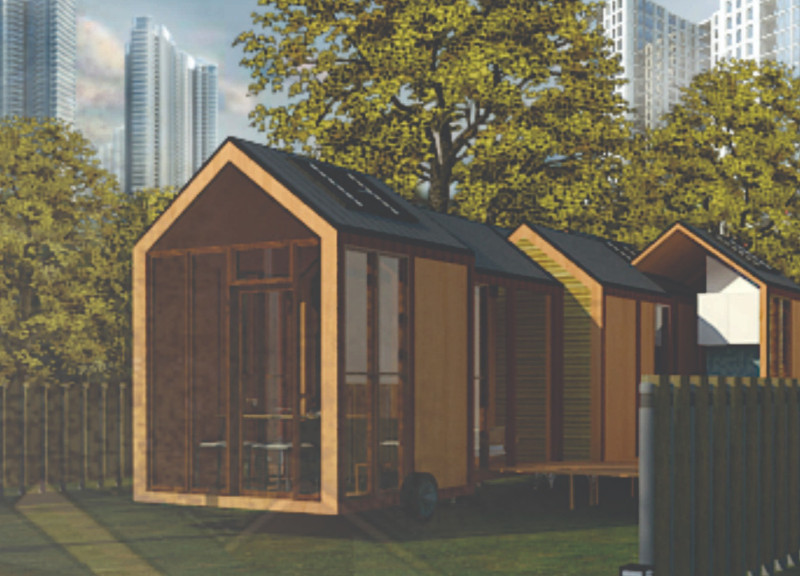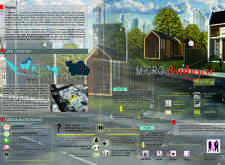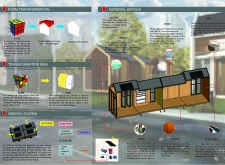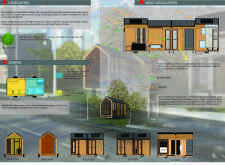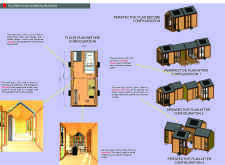5 key facts about this project
The architecture of Micro Ambiyar emphasizes simplicity and functionality, combining contemporary materials with efficient design principles. The project utilizes a modular structure inspired by the concept of a Rubik's Cube, enabling changes in configuration while promoting social integration among inhabitants. By focusing on both privacy and community, the design aligns with the evolving dynamics of relationships and family life among young couples.
Innovative Zoning and Space Utilization
A notable aspect of the Micro Ambiyar project is its strategic zoning, which distinguishes between public and private areas. The layout incorporates multi-functional spaces, such as a working/living area that seamlessly transitions from a workspace to a social environment. The presence of a private bedroom and kitchenette caters to the occupants' need for personal space. This thoughtful organization of spaces facilitates interaction while maintaining essential privacy, making it suited to the lifestyles of its occupants.
Sustainability and Energy Efficiency
The Micro Ambiyar home integrates environmentally responsible practices through the use of sustainable materials and energy-efficient systems. Key materials include aluminum window frames for durability, metal roofing that minimizes heat absorption, and waterproof boards that contribute to structural integrity. The incorporation of solar panels and geothermal systems highlights the project’s commitment to reducing energy consumption and dependence on conventional electricity. Natural ventilation and careful positioning of windows enhance airflow and daylight penetration, further promoting energy efficiency.
Exploring the architectural plans, sections, and designs of the Micro Ambiyar project reveals deeper insights into its innovative solutions. Potential readers are encouraged to examine these elements for a more comprehensive understanding of the architectural ideas that make this project unique in its approach to addressing modern housing needs.


